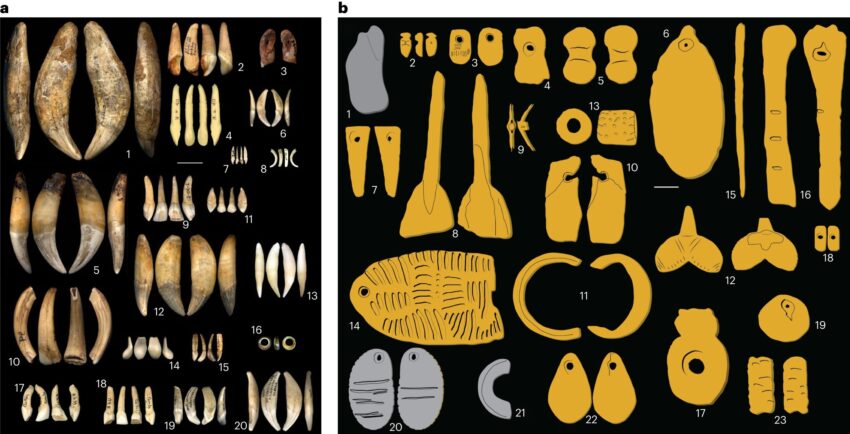A team of anthropologists at the University of Bordeaux has found evidence of nine different cultures living in what is now Europe during the Gravettian period. The research, published in the journal Nature Human Behavior, analyzed personal ancient adornments worn by people living in the region 24,000 or 34,000 years ago.
Previous research had shown that people had been adorning themselves for thousands of years. In this new study, researchers looked at the types of jewelry worn by people living in Europe during the Gravettian period (the Paleolithic period when a culture known as the Gravettians settled in the region.
At this time, people were still hunter-gatherers and wore animal skins. They also collected objects to attach to their clothes, limbs or skins and to decorate themselves. Such objects included animal teeth, bones, ivory, small stones, shells, amber and wood. Some objects were attached intact and worn away, while others were carved or had holes drilled in them to be attached with thread.
By identifying the unique characteristics of the ornaments, the researchers tried to find the possibility of identifying nine different cultures among the people living in Europe during the Gravettian period. To this end, they obtained hundreds of such ornaments and analyzed them, looking for patterns.
They found what they described as consistent differences between groups living in different regions. For example, they found that people living in what is now Eastern Europe tended to prefer white objects like ivory and teeth, while people living on the other side of the Alps tended to gravitate towards more vividly colored objects like stones and shells. The team claims the differences are striking and strong enough to allow the identification of nine distinct cultural groups.
Cover Photo: a) Types of teeth used as ornaments recovered from settlement and burial sites attributed to Gravettian. b) Shaped ornaments and modified bones recovered from settlement and burial sites attributed to the Gravettian.
